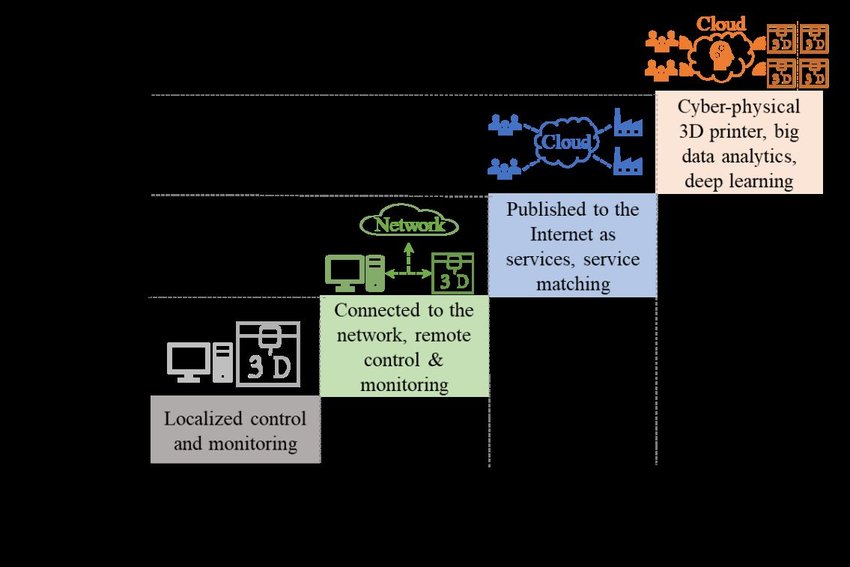
Researchers from China continue in the quest to continually top 3D printing capabilities, adding complex layers with other technologies into the fold, as detailed in the recently published ‘Smart additive manufacturing: Current artificial intelligence-enabled methods and future perspectives.’
The authors are quite blunt—and accurate—in their abstract, regarding needs in additive manufacturing, stating that “because of its rapid growth, the efficiency and robustness of AM-based product development processes should be improved.”
This point of view is shared by researchers around the world who not only want to stretch the limits of technology like 3D printing, but also ambitiously reach for the rewards of potential, and seemingly infinite, innovations. Such strides are revolutionizing fields like medicine and architecture, as well as bolstering production in applications like automotive and aerospace.
The greatest benefits of 3D printing are undeniably felt within manufacturing, as industrial users realize faster turnaround in production, better affordability, and the ability to make products that would have been impossible with conventional methods. As the researchers explain, however, success is based on user expertise as they engage in product development, to include:
- Design
- Process planning
- Production planning
- Process monitoring
Accentuated by other technologies like artificial intelligence, manufacturing processes can be further streamlined with smart agents capable of searching for answers, learning, and acting. In this study, the authors sought to identify what gaps and limitations might exist in using AI, as well as considering future potential for smarter AM, defined as: “a fully integrated, collaborative additive manufacturing system that responds in real time to support ubiquitous and intelligent design, manufacturing and services of 3D printed products.”

The basic structure of intelligent agents
Separated into three types, smart agents are considered to be reflex agents, goal-based agents, and utility-based agents. They may be involved in software or hardware processes, responsible for input and output of commands and files, or they may function as sensors for images, direction, or sound.

The basic structure of intelligent agents
“The layer between the inputs and outputs contains the core functions that form problems and generate solutions. These functions can be based on various structured and unstructured information and knowledge,” explained the researchers.
Each type of AI agent allows users to optimize processes; for instance, knowledge-based agents are able to compile data for users who may be lacking in experience regarding specific production, while goal-based agents may be used in optimization for more expansive design spaces. Current knowledge gaps exist in terms of:
- Lack of comprehensive integration of knowledge in applications
- Need for improvement in current accuracy and generality of models, especially as a deeper understanding of AM processes is met
- Standard databases for the gathering of data
- Lack of integration for a variety of models
- Application of learning models
An underlying theme in this study is the continued need for high-quality and high-volume knowledge in AM-based processes.
“The agents with searching and planning algorithms usually require a large computational power. In addition, some tasks require a fast response. Learning-based real-time control and monitoring is required for the training and execution stages, respectively,” stated the researchers. “Although cloud-based design and simulation software have been developed, real-time tasks cannot be performed. Therefore, a new efficient computational framework should be studied to fulfil both requirements.”
“Because of deep learning development, AI use has increased in many fields. The unique capabilities of AI have also increased the attention given to the improvement of AM-based product development,” concluded the researchers.
What do you think of this news? Let us know your thoughts! Join the discussion of this and other 3D printing topics at 3DPrintBoard.com.
[Source / Images: ‘Smart additive manufacturing: Current artificial intelligence-enabled methods and future perspectives’]
